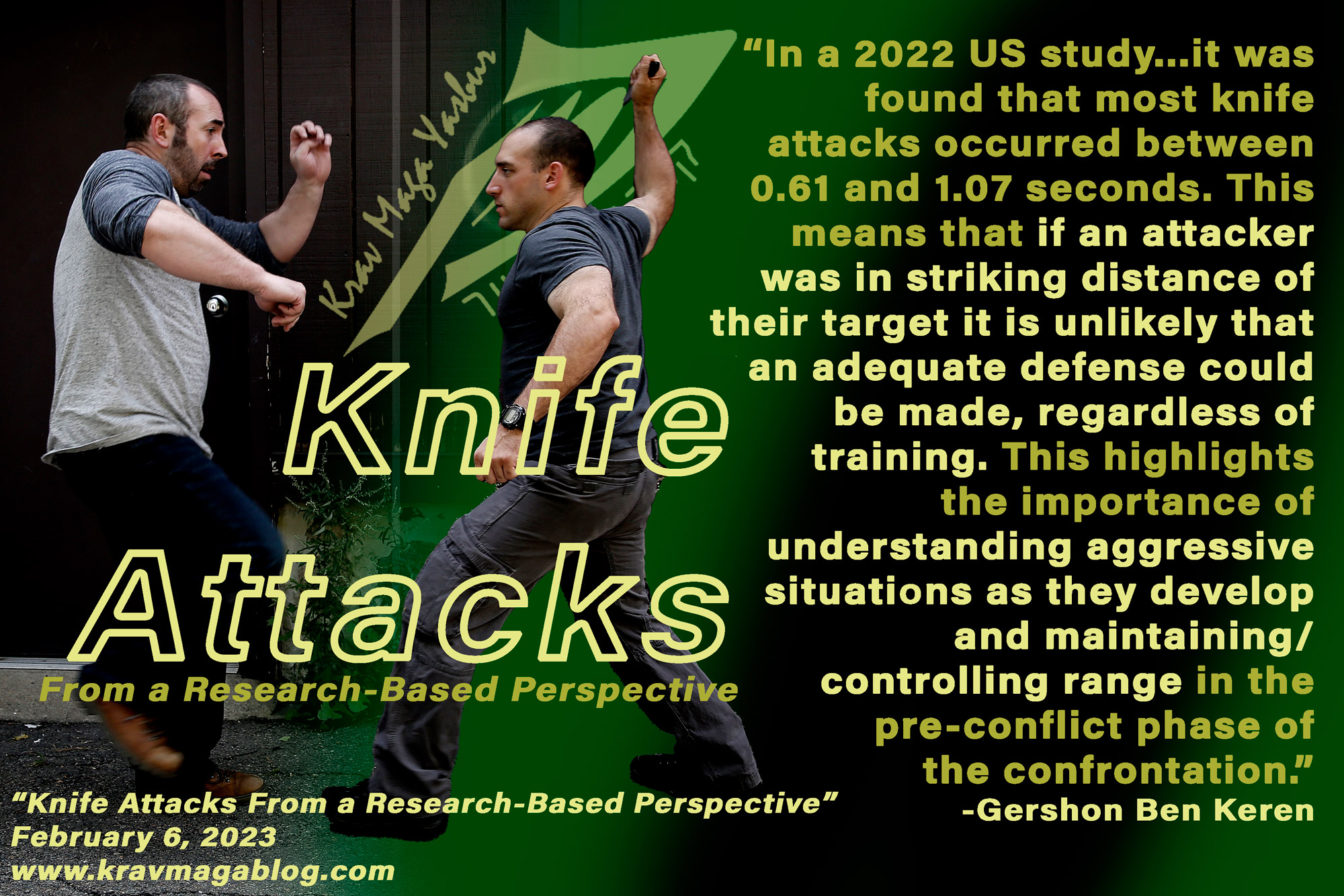One of my most over-used sayings is, “experience by definition is limited”. I say this to remind myself, that just because I have experienced something in a certain way, it doesn’t make it the norm. Another thing that I say a lot is that violence is contextual. I find that on social media, context often gets lost e.g., someone puts up a video demonstrating a certain technique, and it is clear that that they have a certain context in mind, and then others criticize it, because they are envisaging a threat or attack from another perspective and context etc. The reason I want to draw attention to the limits of experience and the importance of context, is that my experiences of dealing with knife attacks, are very specific, extremely dependent on context, and don’t reflect the majority of attacks. I have only had to deal with knife once in a non-security role, which means the vast majority of my experiences of dealing with knives, is from a security perspective, where I was fulfilling a role, and also had – if not immediately – some form of backup i.e., I was working as part of a team. Rather than examine these limited experiences, which were largely defined by context, I want to, in this article, look at what various research articles have to tell us concerning knife attacks, and how this perhaps should influence our training. It is tempting to watch and conclude from a couple of YouTube clips showing real-life attacks, what the majority of knife attacks look like – and this is not without value – though this method lacks a scientific foundation i.e., you are seeing attacks which have been captured on video, and that are determined by your search criteria etc. By looking at publicly collected statistics and academic research – that also has its own self-identified limitations – we can expand our understanding and get a more accurate picture of what the majority of knife attacks look like.
Almost every time I was attacked with a knife, I was stabbed rather than slashed. The one time I was slashed was with an old-fashioned, cut-throat razor, which probably would have taken an eye out, but ended up cutting through my lips, as I flinched back – by reaction rather than design. Research by Bleetman et al. (2003), in the Journal of Clinical Forensic Medicine, reports that most victims of knife attacks, visiting hospital emergency rooms have slash type wounds to the face, with only 11% having multiple wounds i.e., having been repeatedly stabbed or slashed. In a later study, that same year, by Bleetman et al. (2003), it was found that the average number of stab and slash wounds, out of a sample of 500 patients who’d been admitted to hospital after being attacked with a knife was 2.4. This would suggest that knife attacks, tend to be short rather than prolonged affairs, with attackers making one or two quick attacks etc. In a 2022 US study, in Forensic Science International, it was found that most knife attacks occurred between 0.61 and 1.07 seconds, this means that if an attacker was in striking distance of their target it is unlikely that an adequate defense could be made, regardless of training. This highlights the importance of understanding aggressive situations as they develop and maintaining/controlling range in the pre-conflict phase of the confrontation i.e., relying on physical techniques and athletic/trained ability alone is unlikely to be successful, however “effective” such techniques and solutions may be deemed.
Lemos and Crane (2004), researching knife crime in the UK, found that although the reason most people initially chose to carry a knife was fear, the vast majority of the times that a knife was used was not defensively as a tool of protection, but one of aggression/offensively. This stresses the importance of “opportunity” in knife attacks i.e., a person may intend to carry a knife as a means of protection, however if an incident results in them becoming angry/aggressive, then it may see them use their weapon against another. It should be noted that this “need” to carry a weapon is the result of living in close proximity to violence, which explains why the majority of both homicides and “near miss” homicides tend to occur in a small number of geographic hotspots (Massey et al., 2019), and amongst people who know each other. A 2020, study in Merseyside (UK) – Campana and Giovannetti - found that one of the biggest predictors for knife carrying and violence was a prior association, with someone who already carried a knife. Thomsen et al., in a 2020, study in Denmark, looking at knife homicides between 1992 and 2016 (471 homicides), found that only 15.9% of killing involved strangers in public/nightlife settings. Whilst we may see ourselves as being at risk for knife attacks, the truth is, that if we avoid certain districts/locations and don’t involve ourselves with people who carry knives (usually younger people), the chances of encountering a knife-wielding assailant are relatively slim. This doesn’t mean that it isn’t important to learn how to effectively deal with knife attacks, but rather to understand, that where we go, and who we go there with are important factors. We should also note that if we choose to carry a knife for our own personal defense, we may be inadvertently creating our own “opportunities” to use it aggressively/offensively e.g., when someone commits a “wrong” against us.
Share:

Gershon Ben Keren
2.8K FollowersGershon Ben Keren, is a criminologist, security consultant and Krav Maga Instructor (5th Degree Black Belt) who completed his instructor training in Israel. He has written three books on Krav Maga and was a 2010 inductee into the Museum of Israeli Martial Arts.
Click here to learn more.

